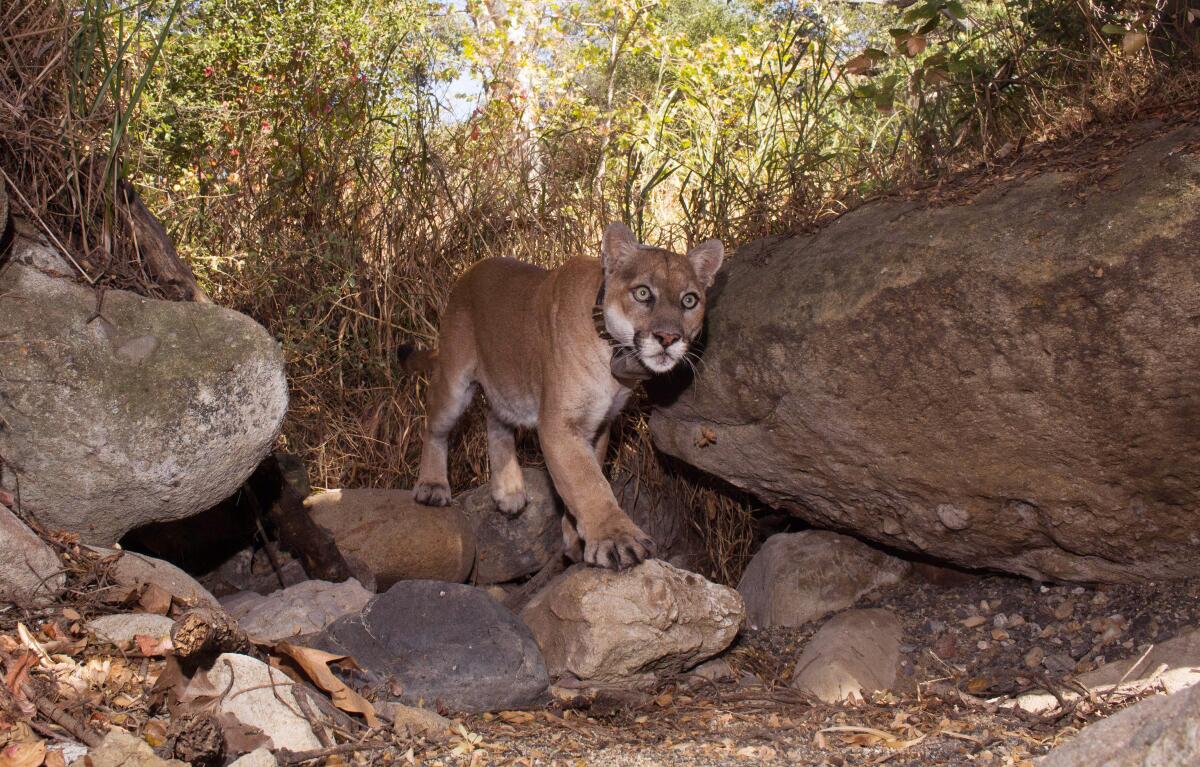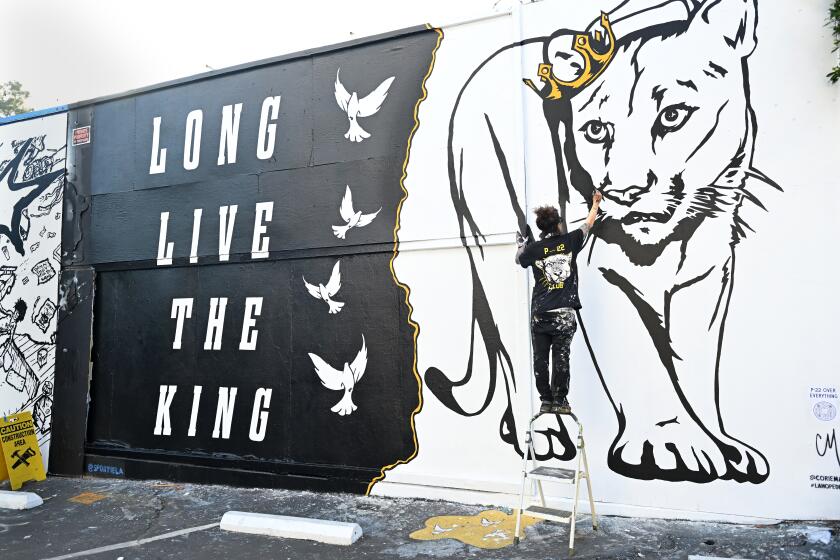Bury or study? What to do with P-22’s earthly remains

- Share via
The mountain lion P-22 was practically a cult figure in Los Angeles — a part of the lore of the city. Wild and nimble, he lived and hunted in Griffith Park, a nine-square-mile range that’s minuscule for a big cat, staying out of sight during daylight hours.
Residents were enchanted by his presence and jolted by the suddenness of his death this month. After a decade in Griffith Park, the 12-year-old lion wandered into nearby neighborhoods where he killed a pet dog and probably was hit by at least one car. After he was caught and tranquilized, a veterinary examination revealed a grim list of ailments and he was euthanized.
The decision by state wildlife officials to end his life raised another difficult question: What should be done with his remains?
The mountain lion that roamed Los Angeles’ Griffith Park and surrounding neighborhoods for a decade will be remembered Feb. 4. He died Dec. 17.
The Natural History Museum of Los Angeles County had been granted a permit from the California Department of Fish and Wildlife to keep P-22 for research. His remains are currently there in refrigeration. The museum already has an exhibit on the life and habitat of P-22. But members of local Native American communities want P-22 buried.
“We believe all the animals come from the earth and we want them returned to the earth,” says Alan Salazar, tribal elder with the Fernandeño Tataviam Band of Mission Indians. Salazar was there when P22’s remains were picked up at the San Diego Zoo, where he had been necropsied. With other Native Americans and museum officials gathered around the animal, Salazar burned sage and waved the smoke over his body ceremonially.
Natural History Museum officials have said they will not put P-22 on display, but museum biologist Miguel Ordeñana wants the big cat for research and conservation purposes. The disposition of the remains is on hold while discussions are underway with Tongva, Tataviam and Chumash tribal communities to determine what should happen to P-22, according to Ordeñana.
The question is, can we recognize P-22’s value to science and the city’s love of him? We think so. The Native American community believes all animals are teachers to be observed and learned from. And most everyone else thought of him as something of an exotic stray cat that we loved having in the neighborhood even if we rarely saw him. Many Angelenos want a respectful send-off. Scientists want to keep his remains close by.
Editorial: When will mountain lions in Los Angeles County stop being killed by cars and rat poison?
We need to find ways to reduce the perils of fast cars and powerful rat poisons to Southern California mountain lions.
Just as he was seen as a teacher in the Native American community, P-22 taught all of Los Angeles about the plight of mountain lions and he should be venerated for that. He was hemmed in to Griffith Park by freeways and unable to find a mate, and his isolation made people realize the importance of wildlife crossings.
“I’d still be fundraising if it weren’t for P-22’s story,” says Beth Pratt, California regional executive director of the National Wildlife Federation who helped raise millions for the Wallis Annenberg Wildlife Crossing over the 101 Freeway in Agoura Hills. P-22’s bout with mange in 2014 — which he recovered from after National Park Service biologists tranquilized and treated him — and the photo snapped of him looking ill publicized the danger of widespread rodenticide use. Predators such as lions are sickened when they ingest smaller animals poisoned by rodenticides.
But his remains are invaluable as a teaching tool for scientists. “The museum is a place for tissue samples, skin samples to be available for research in the future,” says Ordeñana, who also understands the personal connection to the lion. It’s not just about discovering what ailed P-22 (which we pretty much know already) but contributing to long-term research on multiple animals. As scientific research evolves, more can be done with his tissue samples. For example, National Park Service scientists and others recently started doing genomic studies on big cats.
If we care about the health and survival of future mountain lions, this kind of research must continue.
But there’s no reason we can’t have a ceremonial burial after some tissues are collected. Native Americans may want to see him buried without having any tissue taken for research. Ordeñana initially had wanted to keep parts of his body for the museum’s display. Surely, there is a compromise that befits all the communities that embraced this legendary animal.
More to Read
A cure for the common opinion
Get thought-provoking perspectives with our weekly newsletter.
You may occasionally receive promotional content from the Los Angeles Times.










